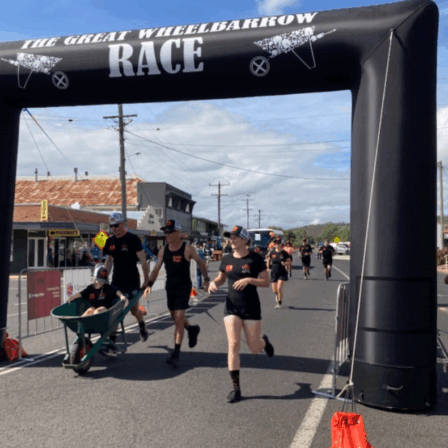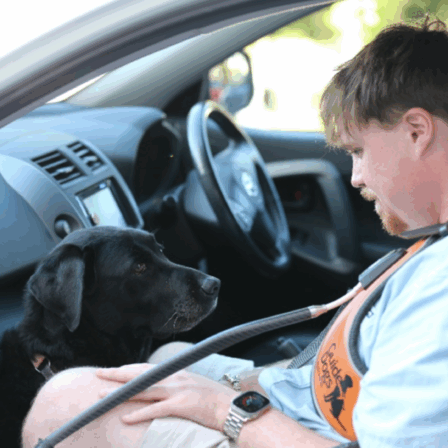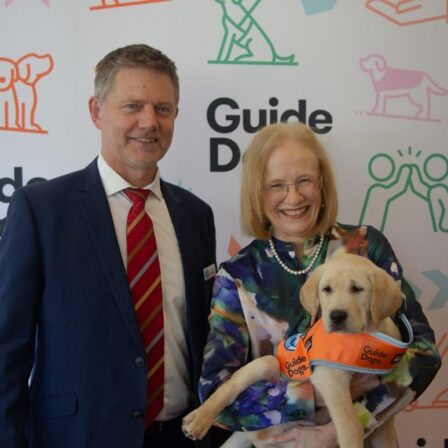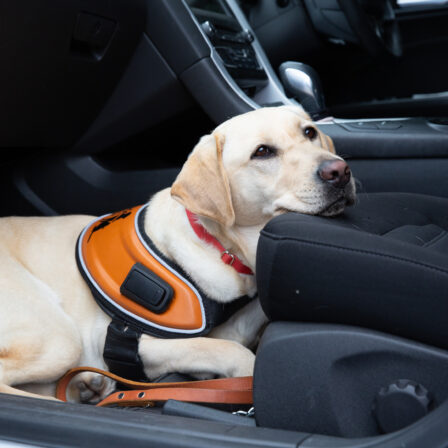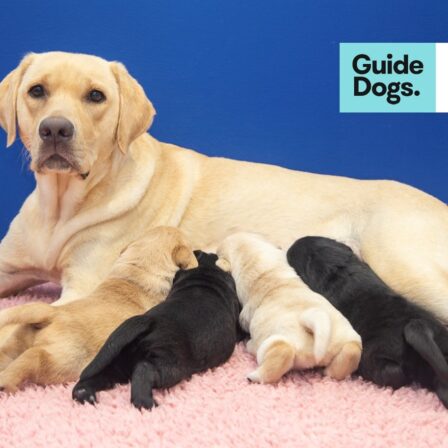News
The moment I knew I could not live without a white cane


Darren Solly was adamant he would never use a white cane – not wanting to be put into a box he didn’t feel comfortable in.
But, in the days after the young father received the shocking diagnosis of Retinitis Pigmentosa (RP) a few years ago, he quickly realised that he would have to ‘lose the stubbornness and vanity‘.
Darren shared his inspirational story with us for International White Cane Day on 15 October as a way to educate the public, encourage other people with vision impairment to live they life they want to, and to say thank you to those who have helped him on his journey.
“It was soon after I was diagnosed that I was at the shopping centre and I tripped over a young girl who ran in front of me,”
– Darren Solly.“I knocked her flying and the girl’s mother rightly so gave me a serve. All I could say was that I was really sorry, I hadn’t seen her.
“When I was at home that night preparing dinner I had a thought. What if I had knocked that little girl over near a flight of stairs or a drop-off, she might not have survived.
“I thought to myself, if I’m dumb enough to not use a white cane that’s my own fault if I get hurt, but I couldn’t risk hurting someone else.”
It was the “reality check” and “wake-up call” Darren needed.
“It was more about vanity that I didn’t want to use a white cane. I didn’t want to stand out in the crowd. As soon as you have a white cane – or a Guide Dog for that matter – you instantly become recognisable and you stand out.”
“I did a lot of soul-searching because I am quite a stubborn person. I realised I had to entice the concept of having a cane, because I’m on my own and don’t have the luxury of having someone to help guide me around.”
Retinitis Pigmentosa was a foreign concept, until it became his reality.
“The diagnosis came as a complete surprise,” the now 50-year-old said.
“Because you can’t see through anyone else’s eyes, I just assumed what I was seeing was the same as what everyone else saw.
“But looking back now, with hindsight, I realise how rapidly I was losing my sight. I would be driving and a car would just appear, so I assumed they had been speeding; or a person would stand beside me and tap me on the shoulder and I would have no idea they were there. That was me losing my peripheral vision.”

On the left is considered perfect vision, and on the right is an example of how someone with RP may see the same image.
RP is usually a hereditary condition but no one else in Mr Solly’s family had ever heard of the condition, let alone been diagnosed. Thankfully, his young daughter was tested for the condition soon after Darren’s diagnosis and had no sign of the condition which causes gradual vision loss.
It has taken some adjustment, and extensive mobility training with Guide Dogs Queensland for Mr Solly to feel empowered to live an independent life with his cane.
Thanks to generous community donations, Guide Dogs Queensland is able to offer white cane training for blind and vision-impaired Queenslanders.
[button link=”/donate/” type=”primary” xclass=”btn-arrow-right”]Donate today[/button]
“When I started first using the white cane, it was an internal struggle. I did now stand out in the crowd, and I had to re-educate myself about a lot of things. Not just re-educate myself, but also my friends and family. My mum would get so angry that people would be staring at me, but I can’t see them, so you just have to learn to let it go.”
Mr Solly had to adapt to what he calls “a new normal”.
“I drove myself to the ophthalmologist the day I was diagnosed; so that was obviously an instant change. There was no way I was able to drive home.”
“I can no longer just jump in the car and duck somewhere. Those days are gone.
“Everything I do now has to be planned out with military precision; I have to think about transport, accessibility, how I can get between two places, train and bus times, crowds.
“I get home now from a day out and I am absolutely exhausted. I feel great physically, but I’m mentally exhausted – I wasn’t ready for that. You have to always, always be thinking when you are walking with a cane.”
Mr Solly said he could “completely understand” why some people isolated themselves soon after a diagnosis of vision loss, but that was not going to be the life he chose.
“I’m still young. I may be 50, but I feel like I’m still a 30-year-old. I enjoy going out to the pub and having a beer with my mates, I love going to a concert, playing golf, and I’ve recently started learning how to surf,” he said.
“The cane has given me the confidence to do all of these things. I may not be using the cane to learn how to surf, but without the cane, I might not have the confidence to get out there in the community and continue living the independent life I want to.
“You can close your eyes for a second and imagine what this might be like, but it’s not really anything like what you would imagine. This is just a new normal and I’m making it work. The original diagnosis came as a complete shock, but it’s not the end of the world, I’m not dead.”
“I don’t let the cane define me. It’s a part of my life, but it doesn’t define me; and there’s a fine line between the two.”


